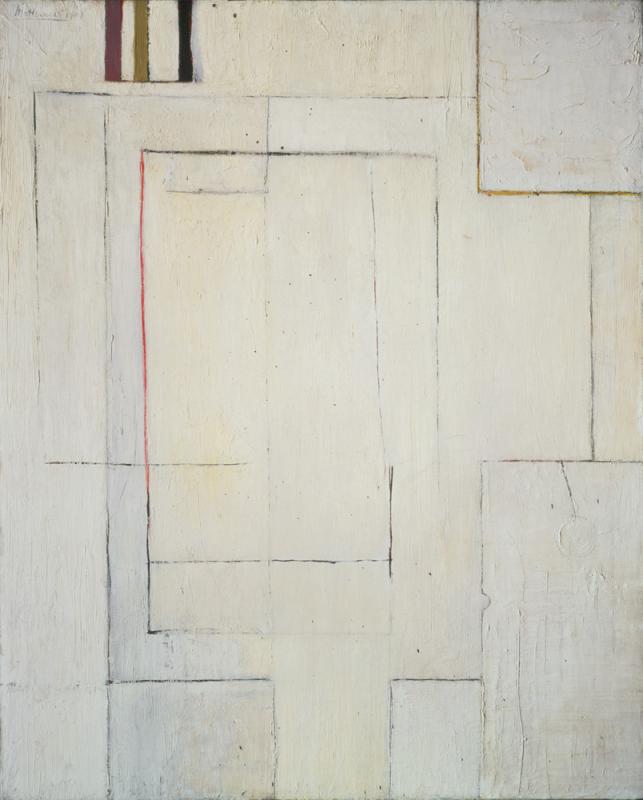Skip to main content
Spanish Picture with Window
Artist
Robert Motherwell
(American, 1915 - 1991)
Date1941
MediumOil on canvas
DimensionsUnframed: 42 x 34 in. (106.68 x 86.36 cm)
Framed: 42 7/8 x 35 1/8 x 1 1/4 in. (108.9 x 89.22 x 3.18 cm)
Framed: 42 7/8 x 35 1/8 x 1 1/4 in. (108.9 x 89.22 x 3.18 cm)
Credit LineCollection of the Modern Art Museum of Fort Worth, Museum purchase, The Friends of Art Endowment Fund
Object number1993.17
Status
On viewSignedrecto u.l.c. "Motherwell[underlined] 1941"
Copyright© 2020 Dedalus Foundation, Inc. / Artists Rights Society (ARS), New York
Category
Label TextIn 1941, his first year as a full-time painter, Robert Motherwell traveled to Mexico with the Surrealist Roberto Matta Echaurren (1911–2002). Matta introduced Motherwell to the process of psychic automatism, essentially a form of doodling employed to tap into the unconscious. For the young artist, automatism (what he came to call “artful scribbling”) became a lifelong creative principle.
After nearly six months in Mexico, Motherwell returned to New York and produced Spanish Picture with Window, 1941. The artist began the painting in an automatist fashion, pouring pigment spontaneously onto the canvas before overlaying it with interlocking geometric planes suggesting a series of overlapping windows. The rectilinear emphasis of the finished composition shows the influence of Piet Mondrian’s paintings, but it differs from the older painter’s fastidiously geometric work in its obviously hand-drawn red, yellow, and black lines that are variously solid, broken, uneven, and indistinct, and in its highly textured white pigment. The latter recalls the powerful materiality of the rough-surfaced walls Motherwell saw in Mexico.
One of the fascinating aspects of Motherwell’s work, which is abundantly evident in the Modern’s holdings, is the way it shows both variety and continuity. While later works differ formally from the early Spanish Picture with Window, its windows and walls became a recurring theme in his long career.
After nearly six months in Mexico, Motherwell returned to New York and produced Spanish Picture with Window, 1941. The artist began the painting in an automatist fashion, pouring pigment spontaneously onto the canvas before overlaying it with interlocking geometric planes suggesting a series of overlapping windows. The rectilinear emphasis of the finished composition shows the influence of Piet Mondrian’s paintings, but it differs from the older painter’s fastidiously geometric work in its obviously hand-drawn red, yellow, and black lines that are variously solid, broken, uneven, and indistinct, and in its highly textured white pigment. The latter recalls the powerful materiality of the rough-surfaced walls Motherwell saw in Mexico.
One of the fascinating aspects of Motherwell’s work, which is abundantly evident in the Modern’s holdings, is the way it shows both variety and continuity. While later works differ formally from the early Spanish Picture with Window, its windows and walls became a recurring theme in his long career.











